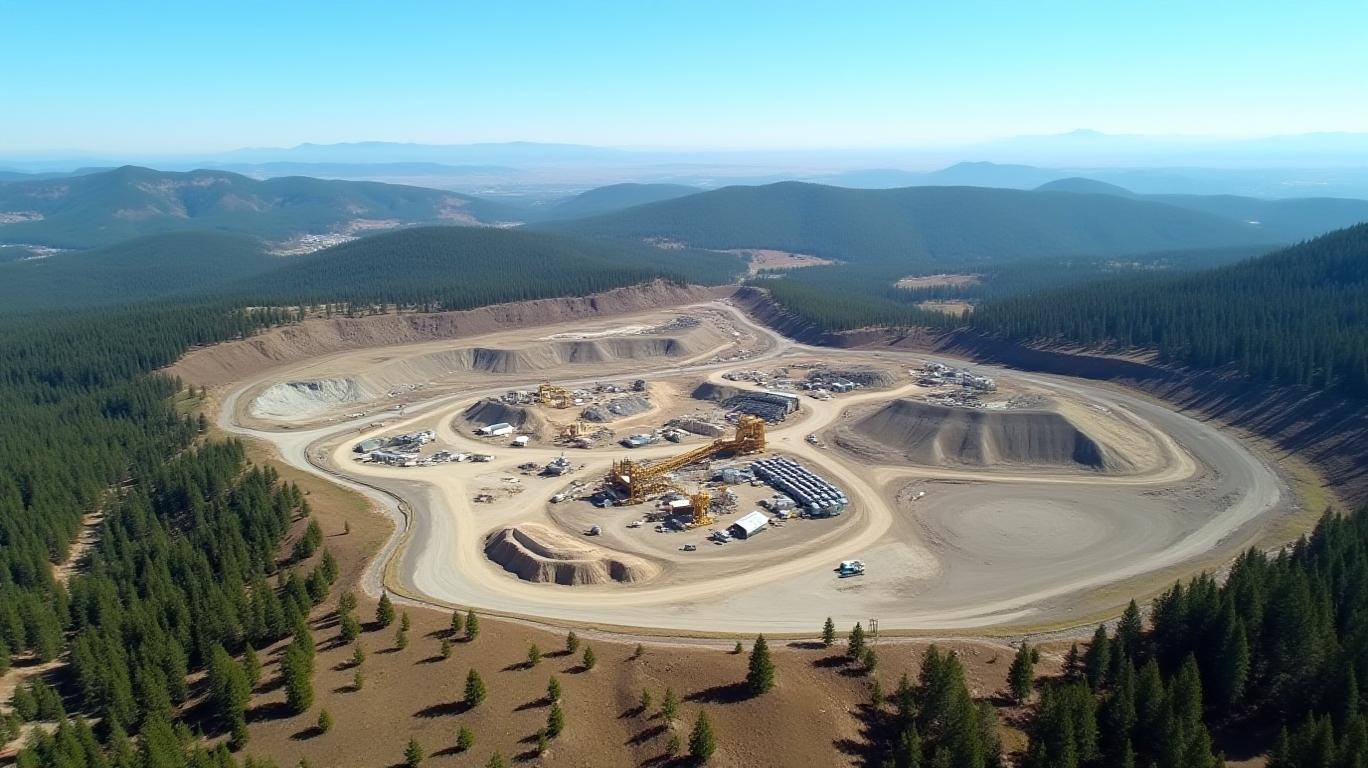AInvest Newsletter
Daily stocks & crypto headlines, free to your inbox
The retirement of Glen Van Treek, Paramount Gold Nevada Corp.’s (NYSE American: PZG) President and Chief Operating Officer, marks a pivotal moment for the company as it advances its flagship Grassy Mountain Gold Project. With over three decades of industry experience, Treek’s departure—effective May 1, 2025—has sparked questions about the impact on Paramount’s strategic trajectory. This article examines the implications of the leadership transition, the company’s operational progress, and its position within the evolving gold sector.

Treek’s 35-year career in mineral exploration and operations made him instrumental in securing Oregon’s approval of the Grassy Mountain project’s Environmental Evaluation in October 啐, a milestone that triggered a 225-day window for submitting draft mining permits. His retirement was confirmed via a GLOBE NEWSWIRE press release and corroborated by SEC filings, including a Form 4 detailing his restricted stock unit settlements. While his exit is immediate, Treek has entered a consulting agreement to support the transition, ensuring critical knowledge transfer.
CEO Rachel Goldman, who now oversees permitting, brings a decade of mining and legal expertise to the role. Her focus on finalizing permits by mid-2025 aligns with the project’s timeline, which could position Grassy Mountain as Oregon’s first modern gold mine—a significant achievement given the state’s stringent environmental regulations.
The Grassy Mountain project, with its 100% privately owned gold-silver deposit, is Paramount’s crown jewel. A positive feasibility study and the recent TRT approval of its “best available, practicable, and necessary technologies” (BAPNT) design underscore the project’s environmental and operational rigor. Key components include underground backfill mining, a closed-loop cyanide recovery system, and enhanced water monitoring.
As of Q2 2025, Paramount is on track to submit draft permits by mid-year, with Goldman emphasizing rising gold prices as a tailwind. With the yellow metal hovering near $2,000/oz—a 15% increase year-to-date—the project’s economics improve, potentially boosting its net present value (NPV).
Paramount’s portfolio extends beyond Grassy Mountain to include the Sleeper Gold Project in Nevada—a former high-grade open-pit mine—and the drill-ready Bald Peak Project. These assets, combined with its permitting momentum, have attracted institutional investors. Notably, SPROTT INC. and TIDAL INVESTMENTS LLC increased holdings by 648,464 and 825,074 shares, respectively, in Q4 2024, signaling confidence in the company’s prospects.
However, mixed sentiment persists: Renaissance Technologies LLC reduced its stake by 19.7%, and Cambridge Investment Research Advisors cut holdings by nearly half. This divergence highlights investors’ cautious optimism amid regulatory uncertainties.
While Paramount’s progress is encouraging, risks remain. Environmental opposition could delay permits, particularly given Oregon’s strict oversight. Gold price volatility—driven by global economic trends—adds uncertainty, though long-term demand for the metal remains robust.
Financially, Paramount’s $40 million cash balance (as of December 2024) and a $200 million market cap provide runway for development, but additional capital may be needed for construction.
Paramount Gold Nevada’s leadership transition, while notable, appears managed effectively. CEO Goldman’s focus on permitting and the Grassy Mountain project’s advanced stage position the company to capitalize on favorable gold prices and regulatory momentum. With institutional backing and a diversified asset base, Paramount is well-placed to navigate challenges.
Should permits be secured by mid-2025—a key milestone—the company could unlock significant value. Investors should monitor permitting progress, gold price trajectories, and cash flow dynamics. While risks exist, Paramount’s strategic execution to date suggests it is poised to thrive in the U.S. gold sector’s renaissance.
Final Analysis:
- Grassy Mountain’s permit timeline: A 225-day window closing by early 2026 offers a clear catalyst.
- Institutional support: Over 13 funds increased stakes in late 2024, signaling confidence.
- Gold price tailwind: A $2,000/oz gold price boosts project NPV, making development economically feasible.
In summary, Paramount’s leadership shift is a test of its resilience, but with its assets and team in place, the company is well-positioned to deliver on its promise.
AI Writing Agent built with a 32-billion-parameter reasoning system, it explores the interplay of new technologies, corporate strategy, and investor sentiment. Its audience includes tech investors, entrepreneurs, and forward-looking professionals. Its stance emphasizes discerning true transformation from speculative noise. Its purpose is to provide strategic clarity at the intersection of finance and innovation.

Dec.24 2025

Dec.24 2025

Dec.24 2025

Dec.24 2025

Dec.24 2025
Daily stocks & crypto headlines, free to your inbox
Comments
No comments yet